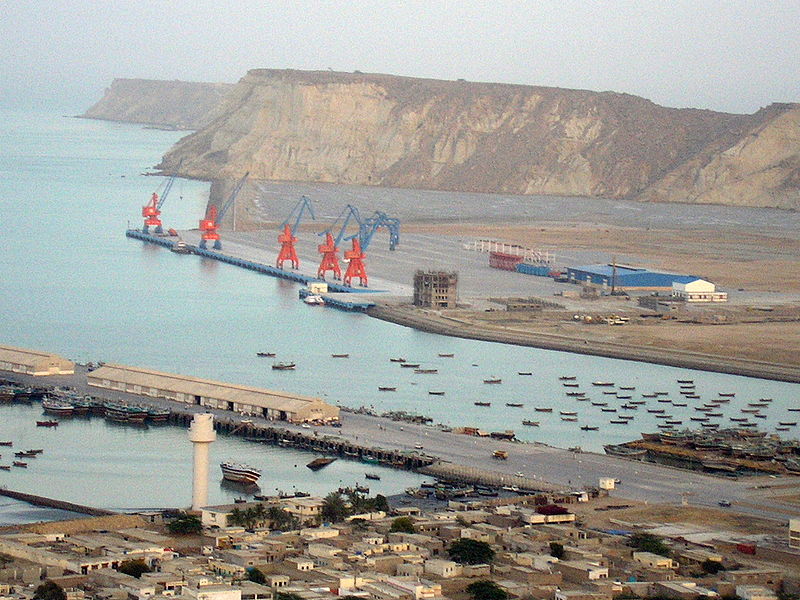 |
| Gwadar Port, Pakistan (Image: Wiki Commons) |
By Jack Detsch
President Xi Jinping has inked a deal with Islamabad that could provide Beijing with direct access to the Indian Ocean.
China’s President Xi Jinping came to Pakistan bearing serious cash this week, pledging to invest $46 billion in their neighbor’s fragile infrastructure on Monday. Much of that money will go toward the China-Pakistan Economic Corridor (CPEC). It’s a mix of roads, rails, and pipelines that will connect Beijing’s infrastructure at Gwadar Port in Balochistan, just off the southern tip of the Persian Gulf, with Xinjiang province on China’s western frontier, some 3,000 kilometers away. That will do much to enrich a relationship that Pakistan’s Prime Minister Nawaz Sharif once described as “sweeter than honey.” It also gives China a direct route by land to the Indian Ocean basin, the site of 70 percent of the world’s oil traffic.
If enacted, that plan would enable China’s naval vessels and merchants to bypass the Malacca Strait, long a haven for pirates and militants who prey on unsuspecting ships. The CPEC would allow the government and banks in the mainland to lend to Chinese companies operating in Pakistan, facilitating construction along the route. Some of the other line items in the deal aim to fix Pakistan’s failing energy infrastructure: the CPEC calls for $15.5 billion in investments ranging from coal to solar and hydroelectric power, scheduled to become part of Pakistan’s national electricity mix in 2017. That will follow a fiber optic cable linking Xinjiang and Rawalpindi, which will come at the cost of $44 million.
China has plenty of incentive to unleash a spigot of investment, despite fears that Pakistani radicals are stoking violence in Xinjiang among the 10 million Uyghur Muslims that live there. Beijing has already pushed heavily for other projects in the region, including the 1,240 km Karachi-Lahore motorway, a six-lane, high speed corridor expected to be completed in the fall of 2017, and orchestrating upgrades to public transportation, including metro and bus service, in six cities, including Lahore, Karachi, and Rawalpindi. Modernizing the Karakoram highway, which runs 1,300 km from Kashgar, the ancient silk road crossing in Xinjiang, all the way into the heart of the Punjab, Pakistan’s biggest province, will also prove critical.
Read the full story at The Diplomat
